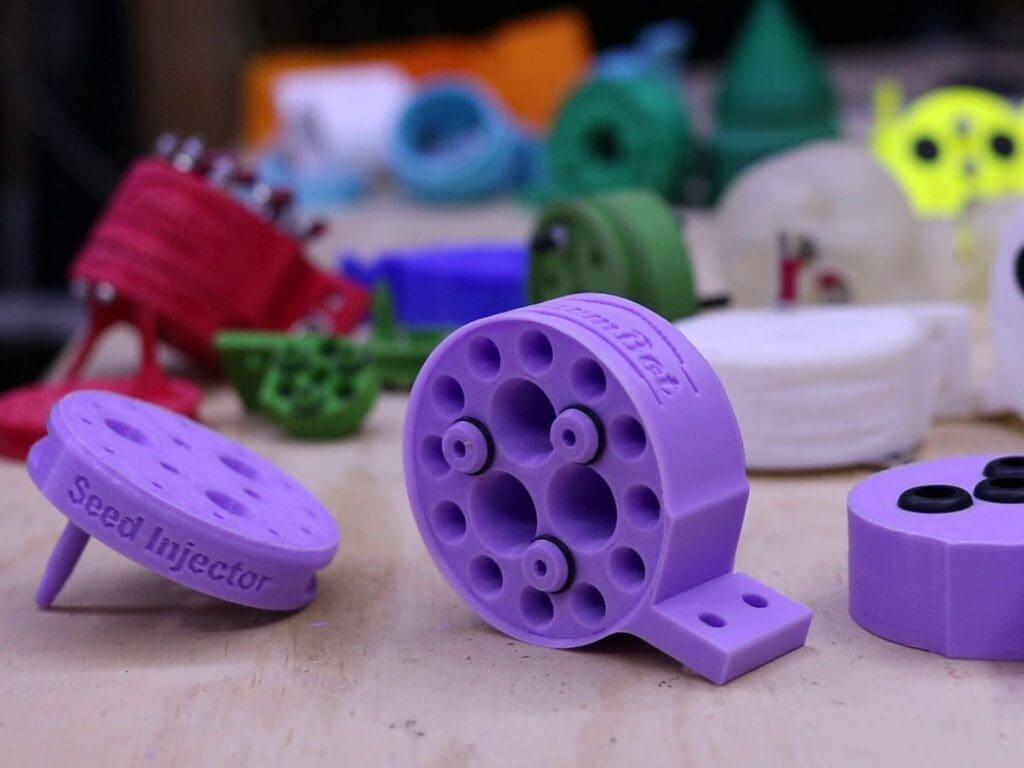Hand tools are essential in various industries, from construction and automotive to woodworking and gardening. Traditionally manufactured through forging and machining, hand tools are now experiencing a revolutionary shift with the introduction of 3D printing technology. This innovative manufacturing method is not only transforming how tools are designed and produced but also enhancing their functionality, customization, and efficiency.
The Emergence of 3D Printing in Hand Tool Manufacturing
3D printing, also known as additive manufacturing, has progressed from prototyping to producing functional, durable goods, including hand tools. This technology allows for the precise layering of materials to create complex and customized products directly from digital models. The flexibility and speed of 3D printing have made it an increasingly popular choice for manufacturing a variety of tools, enabling improvements in tool ergonomics, weight, and strength.

Advantages of 3D Printing in Hand Tool Production
Innovative Tool Designs: 3D printing enables the creation of complex geometries that are difficult or impossible to achieve with traditional manufacturing. This allows for the integration of multiple functions into a single tool, reducing weight and improving usability.
Customization: One of the significant advantages of 3D printing is the ability to customize tools for specific tasks or user preferences. Tools can be designed to fit an individual’s hand perfectly or tailored to specific work environments, enhancing comfort and efficiency.
Material Efficiency: 3D printing is an additive process, meaning material is only used where it is needed. This minimizes waste compared to traditional subtractive manufacturing methods, making tool production more sustainable.
Rapid Prototyping and Production: With 3D printing, new tool designs can be prototyped, tested, and modified quickly. This rapid turnaround time not only speeds up the development process but also allows manufacturers to respond swiftly to market demands or changes.
Key Applications of 3D Printing in Hand Tool Manufacturing
Ergonomic Handles: 3D printing is particularly effective for producing ergonomic handles that are customized to fit the user’s grip, reducing fatigue and the risk of injury. These handles can incorporate textured surfaces for better grip or be made from materials that absorb vibrations to protect users.
Multi-functional Tools: Designers can use 3D printing to combine several tools into one, such as a multi-bit screwdriver with integrated storage for different heads. The ability to print complex internal mechanisms allows for greater functionality without increasing the tool’s size or weight.
Specialized Tools: For industries requiring highly specialized tools, 3D printing offers a cost-effective production method. Tools can be designed for specific applications, such as custom jigs, fixtures, or alignment tools in automotive or aerospace industries.
Durable Tool Components: Advances in 3D printing materials have enabled the production of tool components that are not only lightweight but also exceptionally strong and durable. Metals such as titanium and stainless steel, as well as high-strength polymers, are commonly used in 3D printed tools.

Challenges in 3D Printing for Hand Tools
Despite its advantages, several challenges need to be addressed for the widespread adoption of 3D printing in hand tool manufacturing:
Material Limitations: The strength and durability of materials used in 3D printing are crucial, especially for tools that must withstand high mechanical stress. While there have been significant advancements, matching the performance of traditionally forged tools can still be a challenge.
Production Speed: While 3D printing is excellent for prototyping and small production runs, the speed of printing can be a limiting factor for mass production.
Cost of Production: Although there is potential for material savings, the initial cost of high-quality 3D printers and the price of specialized printing materials can be high. Balancing these costs is crucial for making 3D-printed tools competitive with traditionally manufactured counterparts.
Future Directions in 3D Printing for Hand Tools
The future of 3D printing in hand tool manufacturing looks promising with continuous advancements in printing technologies, materials, and design software. As these technologies mature, they are expected to overcome current limitations, making 3D printing a more viable option for larger scale production. Furthermore, ongoing research into new materials and hybrid manufacturing processes (combining 3D printing with traditional methods) may lead to even greater efficiencies and innovations.
3D printing is set to continue reshaping the landscape of hand tool manufacturing, offering innovative solutions that enhance tool functionality, user comfort, and production sustainability. As the technology advances, it promises to unlock new possibilities for designing and producing more sophisticated, customized, and efficient tools, ultimately revolutionizing the way professionals and hobbyists alike approach their tasks and projects.








